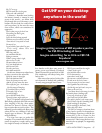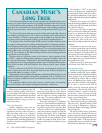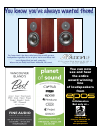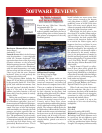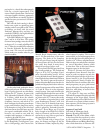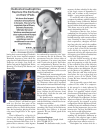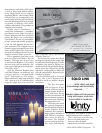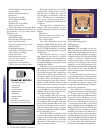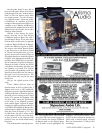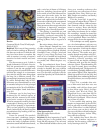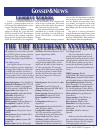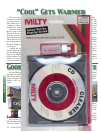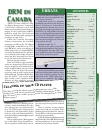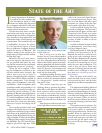
Feedback
Software
On the other hand, he was able to
hear the folk music idiom of his native
land through fresh ears. Indeed “native
land” in this case doesn’t mean what
one might assume. To other Europe-
ans “Spanish music” meant the music
of Andalusia. If a number of French
composers borrowed from it (Bizet is an
example, as are Chabrier and Ravel), it
was because the Andalusians were much
influenced by the French, and so they
found its forms familiar.
Albéniz is best known for piano
music, drawing on the folk themes
of different parts of Spain, but with a
pan-European flavor. It has often been
orchestrated, and this suite, by Spanish
conductor Rafael Frühbeck de Burgos,
evokes the different regions of Spain.
For anyone who thinks Spanish music
is just flamenco or the dances found
in Carmen, the Española suite is an ear
opener. Seven of the sections (I’ll get to
the eighth shortly) are named for regions
of Spain, with appropriate melodies or
rhythms. For Castille there is a Seguidil-
las, for Austurias a Leyenda, for Aragon a
Fantasia, for Cadiz a Cancion, for Seville
a Sevillanas, for Granada a Serenata, and
for Cataluna a Corranda. The Cancion
and Corranda will probably sound less
Spanish to those who know the country
through travel documentaries, but
for that reason they may be the most
instructive.
Oh yes, the eighth section of the
suite.
There, Albéniz did not draw on
Spanish music at all. It is titled Cuba. I
suppose that it was, in 1967, politically
dangerous even for a Spanish conductor
working in Britain, at least if he had any
intention of ever touring in the United
States, The pretext for dropping Cuba
was that, alone among the movements
of the suite, it was inspired by music
from outside Spain. Instead of simply
dropping it, which would have made for a
very short LP, Frühbeck de Burgos sub-
stituted a piece called Cordoba, extracted
from the Cantos de España, op. 232. It is
an odd choice, because it seems totally
out of temper with the rest of the suite,
at least as much as the original Cuba
(which I have not heard) would surely
have been.
The orchestration is entirely success-
ful. The original jacket notes (shrunk
down from LP size to textured paper in
the CD) outline the changes Frühbeck
de Burgos made to the original piano
score to make it seem appropriate for
orchestra. This FIM re-release, made
by JVC in the xrcd process, sounds very
good, with a natural spread of sound
that was characteristic of Decca’s ffrr
recordings.
ULTRA HIGH FIDELITY Magazine 75



